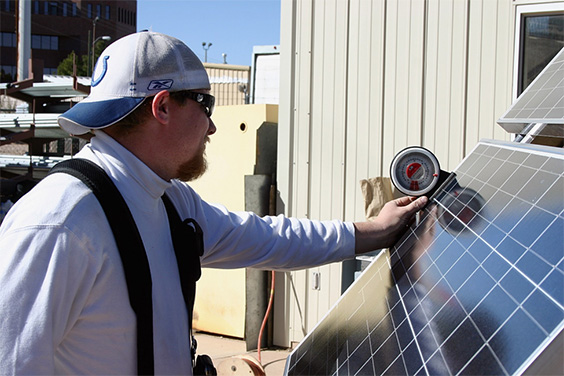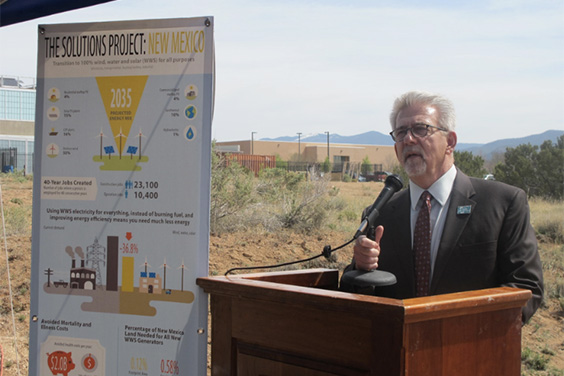MESCALERO APACHE HATCHERY
Mescalero Apache on powering a fish hatchery with solar
The idea for the solar array project at the Mescalero Tribal Fish Hatchery was first introduced in 2014. The hatchery manager, at that time, worked on a proposal and received approval to fund and construct a photovoltaic system that would reduce the cost of the energy used in the Fish Hatchery Tank house and the Maintenance Shop buildings.
What tools, resources or financing did you use to establish your project?
The funding for this project came from the Bureau of Indian Affairs (BIA) – Hatchery Maintenance program. Hatchery Maintenance funding is available for hatcheries owned by federally recognized tribes, which Mescalero Tribal Fish Hatchery applies for each year.
What benefits have you realized?
In late spring, summer and early fall of 2015, the mounted array system was constructed. The system began operation in January 2016.
Prior to the installation, our monthly electricity bill for the tank house and the shop ranged between $250 and $300. After a month, we were able to see a significant reduction in our bill: we were even seeing credits on our bill ranging from $3 to $32. According to Otero Electric Coop, we are gaining more power than we are losing. Our electric bill is set up so that we are selling our energy back to the utility company.
The benefits from a solar array project can go a long way. We are not only enjoying the economic benefits, but we are reducing the hatchery’s carbon footprint.
What challenges did you overcome to implement your project?
With limited funding coming into the hatchery, the staff here understands the importance of keeping the system operational so it continues to do its intended function. We check the inverters to make sure they stay up and running. We are also looking to replace 3-4 street lamps throughout the hatchery grounds with solar lighting.
It is important to keep the solar panels away from anything that could block direct sunlight. The hatchery continually prunes an elm tree and other vegetation overgrowth to ensure the full benefits from the operating solar panel system. Part of our plans to erect the solar panel system involved setting up an electric pole, line and meter. It was not until after the pole and electric line were set up and then torn down by a delivery truck that we realized the electric line was hanging too low.
It is important to account for all measures of the project to maintain the connection between solar panels, inverters, electric lines and meters. Another challenge was the weather. Beginning the work for this project at a time of monsoons had its drawbacks. Because this was an outdoors project, work was paused during the rain. In the fall at the completion of the project, we were dealing with light snows and wind chills.
What advice would you give neighboring communities who are trying to implement a similar project?
Our advice for other communities wanting to establish a similar solar array project is to make sure you do your research. Get qualified, professional electricians and panel installers. Plan accordingly as far as weather is concerned. Spring to mid-summer is an ideal time to set up the system. Have additional staff and volunteers. The extra hands really helped, and we gained valuable knowledge along the way.
Always be aware of the area you or contractors are working in. “Safety first” is so important.


